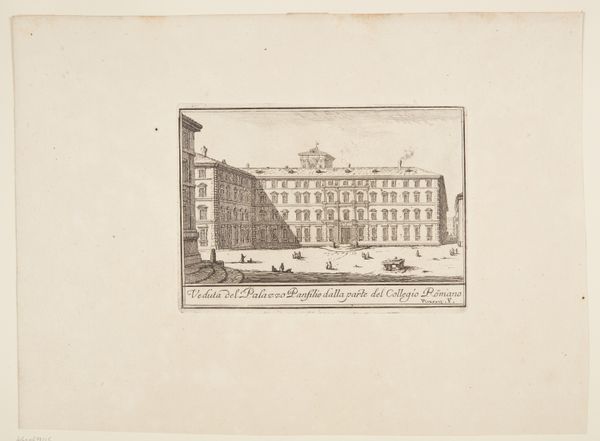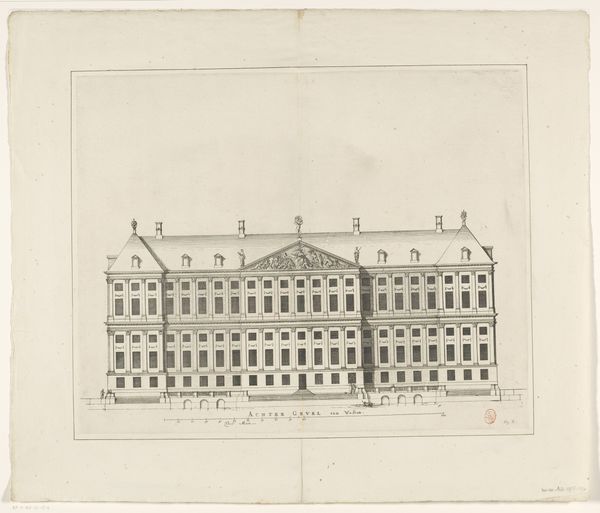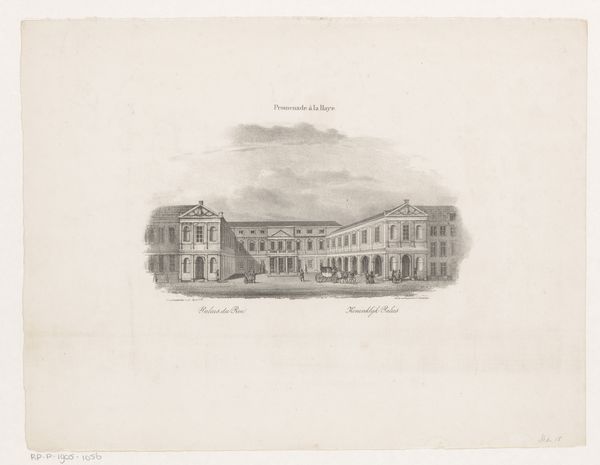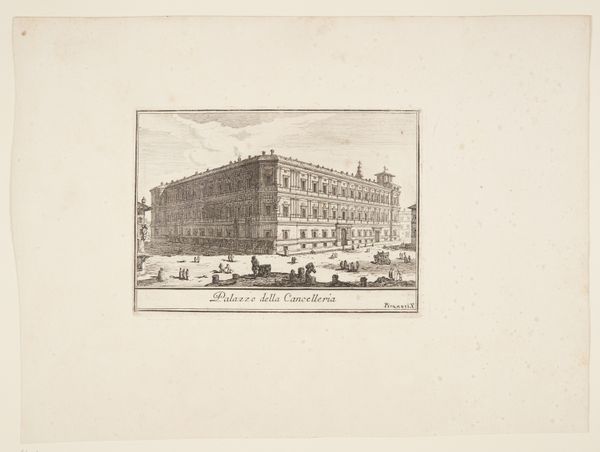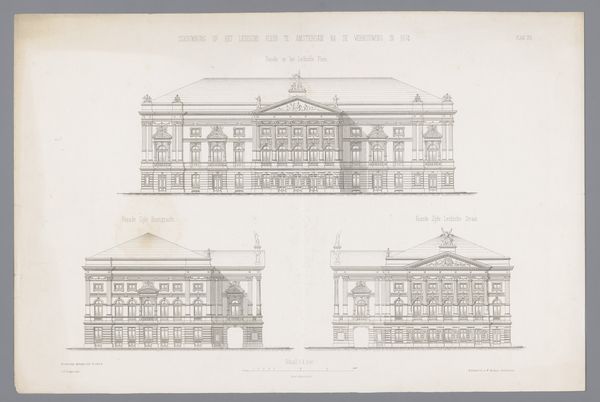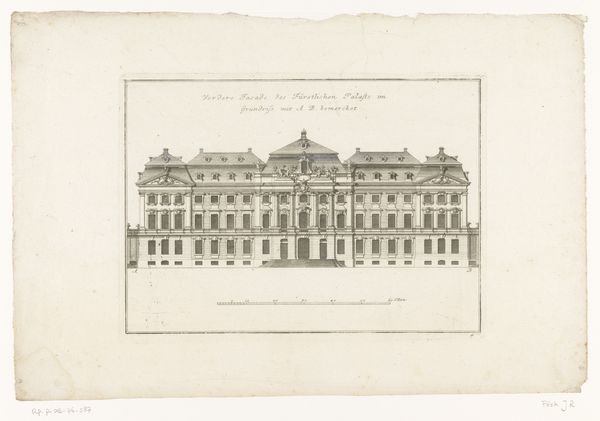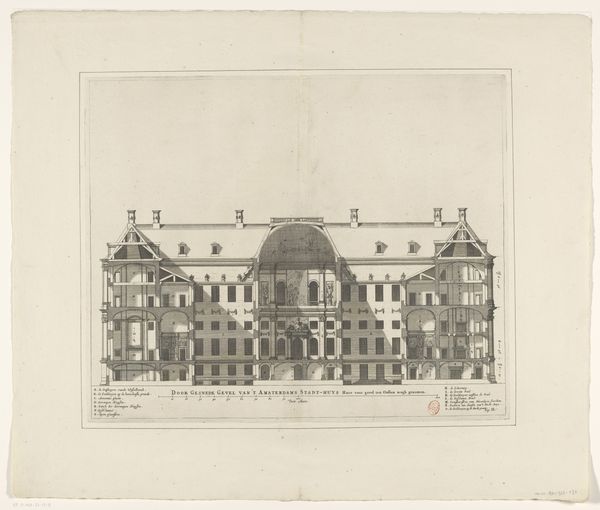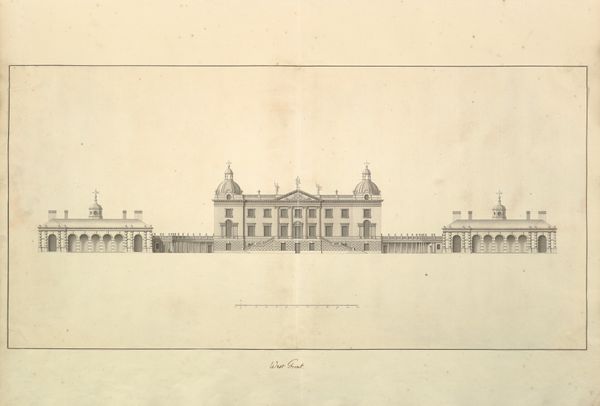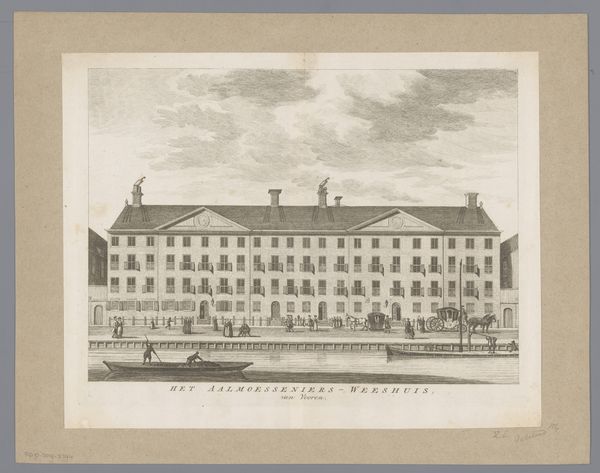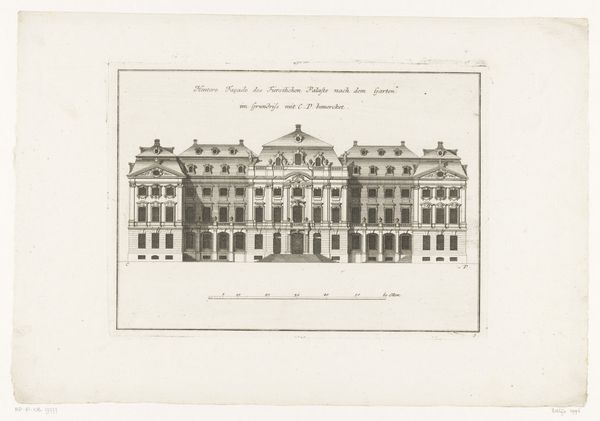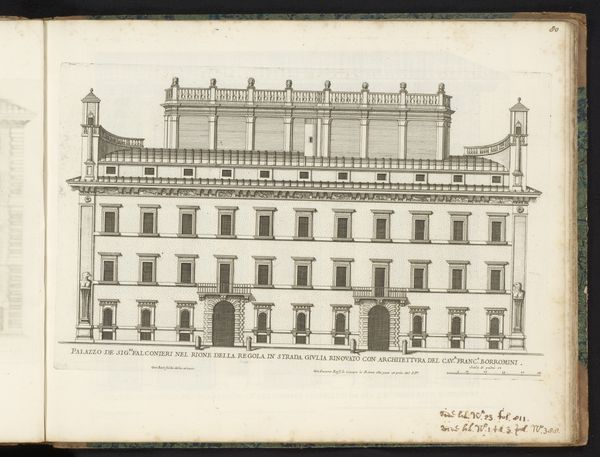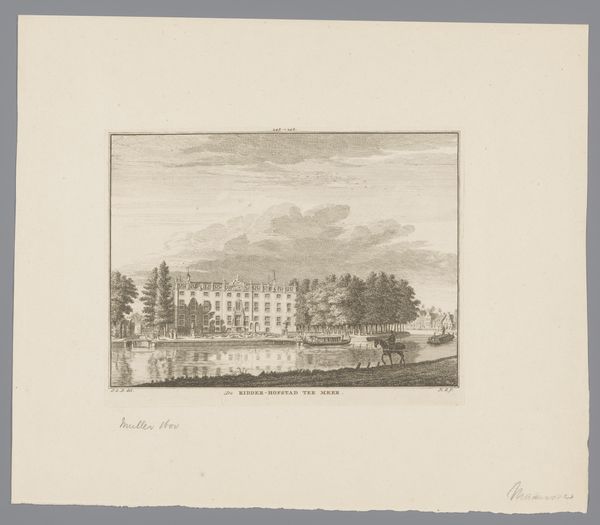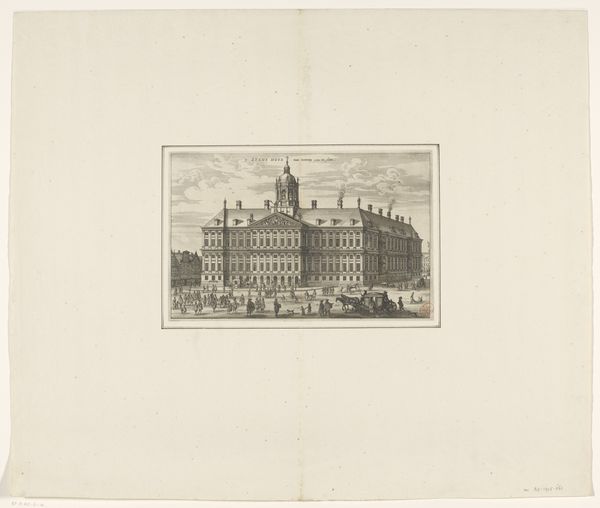
drawing, paper, pencil, architecture
#
drawing
#
landscape
#
paper
#
pencil
#
academic-art
#
architecture
Dimensions: height 115 mm, width 190 mm, height 445 mm, width 365 mm
Copyright: Rijks Museum: Open Domain
Editor: We're looking at "Willemskazerne te Utrecht," a pencil and paper drawing created sometime between 1827 and 1836 by G.M. Heaton. It's currently held at the Rijksmuseum. The building depicted appears quite imposing and regimented. What do you see in this piece from a formalist perspective? Curator: From a formalist reading, I am struck by the almost obsessive commitment to linear perspective. Notice how the horizontal lines of the building, particularly the roof and window sills, converge toward a vanishing point. This creates a powerful sense of depth, but also one of confinement, wouldn’t you agree? The stark contrast in the drawing caused by the sharp rendering of light on the façade is notable too. Editor: Yes, I see what you mean. It's incredibly detailed and precise. The sheer number of windows is impressive, almost overwhelming, contributing to a sense of coldness. What’s the impact of the subtle tonal variations created by the pencil? Curator: Indeed, consider how the limited tonal range of the pencil – moving from pale grey to darker shades – is used to delineate form and space. Heaton utilizes the medium economically, creating a texture and articulation of volume without the distraction of colour, foregrounding geometry. Does the limited range cause you to see anything particular when focusing on form over hue? Editor: It definitely brings out the geometric structure. It's all about lines and shapes: the rectangles of the windows, the long horizontal lines of the building itself, and the triangles formed by the roof. Now that I examine its internal architecture, the entire drawing almost reduces down to these basic shapes. Curator: Precisely. By abstracting the building into these elemental forms, the artist forces us to confront its inherent structure and, consequently, its meaning. The meticulous precision does seem intentional now that we consider the piece as a whole. Editor: Thank you; considering only form helped me ignore external contextual factors when viewing the drawing and appreciate how internal composition can create an experience on its own. Curator: And examining drawings such as this under a specific interpretive framework gives it renewed purpose, even as a seemingly simple technical exercise in replicating an architectural object with limited means.
Comments
No comments
Be the first to comment and join the conversation on the ultimate creative platform.
